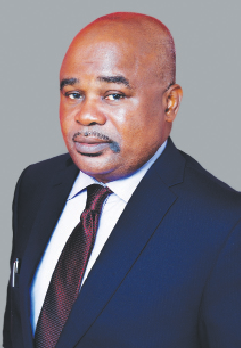An ex parte application and the granting of the order by the court have been issues of concern to litigants and other stakeholders in the judicial sector. The contention is that it is a legal instrument which the applicant uses to ambush the respondent in a legal battle because the order is granted without the respondent being heard. Senior Correspondent, ONYEWUCHI OJINNAKA, spoke with a lawyer, Chidi Nwuke, who shed more light on the issue.
On different occasions, the Chief Judge, Federal High Court of Nigeria, Justice Ibrahim Ndahi Auta, had advised judges to be cautious in making an ex parte order. His advice was informed by the indiscriminate granting of ex parte order by some judges. In one of the valedictory sessions for a retired judge, he remarked that some individuals wittingly rush to the court seeking an ex parte order for their selfish motives. Issues have been raised on the application for ex parte proceedings and granting of the order by the court. Litigants wonder why an application should be heard in the absence of the other party or respondent, saying that an ex parte order is an ‘ambush’.
An ex parte refers to a motion or petition by or for one party. An ex parte judicial proceeding is heard where the opposing party has not received notice nor is present. This is an exception to the usual rule of court procedure and due process rights where both parties must be present at any argument before a judge. It is in contrast to the rule that a counsel may not notify a judge without previously notifying the opposition.
Ex parte motion, petitions or hearings are usually temporary orders, like a restraining order or temporary custody, pending a formal hearing or an emergency request for an extension. Most jurisdictions require at least a good faith effort to notify the opposing lawyer of the time and place of any ex parte hearing.
Elaborating more on ex parte motion and the order, a Lagos lawyer, Chidi Henry Nwuke, explained that it is a motion or petition that can be heard in court without putting the other party or respondent under notice.
According to Nwuke, ex parte motion is heard barely on the application of the applicant because of the urgency of the matter, that there would not be time to get the other person or party to respond in such application. It is a way of seeking to get an immediate court order or may be an injunction of one thing or another to put parties at bay until after putting the other party on notice.
The application
He said that ordinarily, application for an ex parte order should be in matters of extreme urgency. “Ex parte is to save urgent situation.”
An ex parte application could be used according to the rules such as in originating some cases or in commencing a process one needs the leave of the court; in such situations, ex parte motion can be applied. While filling an ex parte motion, the applicant always gives an undertaking to pay costs if at the end of the day, it is found that the order ought not to have been made in the first instance.
He gave an instance that if parties are in dispute over a parcel of land and while the dispute was yet to be resolved, a developer starts to develop or erect structure on it, particularly when it is not convenient for court to hear from the parties. In order to stop further work on the land, the aggrieved party (applicant) would rush to the court with ex parte application, seeking the immediate order of the court to restrain further work on the land. The court hears the application in the absence of the respondent (developer) and makes the order which would be served with the motion on notice to the developer.
The hearing
Nwuke explained that an ex parte application can be heard in the open court or in the chambers. It is at the discretion of the trial judge. At this point, it is the applicant that should be heard alone without the respondent being heard or even being present. If the court grants an ex parte motion, a hearing will be scheduled before the court. The hearing will be within 30 days, so the other party may have an opportunity to express his or her views on the emergency request.
Granting the order/communicating the respondent
He averred that when the application is granted, the rolled order or the order that the court makes will be served on the respondent together with the other originating processes by the court bailiff. But in most situations, an ex parte motion is often accompanied with another motion on notice. The ex parte motion or the order made lasts till the hearing of the substantive motion on notice. The motion on notice then may probably seek an interlocutory injunction and after both parties have been heard, the judge then decides. And if the order is granted, it lasts till the end or depending on the hearing of the case or probably when the judge decides to discharge the order.
“Ex parte motion orders are served on the respondent by the court after it has been made,” he added.
Discharging the order
According to Nwuke, there are provisions in the rules of the court which states what a respondent to an ex parte motion can do. He said that if one feels that an ex parte motion ought not to have been granted, that the order made must not have been made, the respondent can bring an application to discharge the order. He submitted that most of the ex parte motions last only two weeks or till the hearing of the motion on notice that comes with it, and so the party that is served can protest by filling counter-motion, asking the court to discharge the order. The respondent can apply for the order to be discharged if he has a ground to believe that the order ought not to have been made.
Besides, the facts of the case determines its discharge. Ex parte application is made and decided on the application on the affidavit evidence provided by the applicant.
His words: “When the other side or party that has not been heard is served with motion on notice, he comes to court, creating a scenario that the judge that took the decision ought not to have granted the order. He comes to court, setting out facts and makes an application to discharge the order.”
If the facts contradicts what the applicant had said and if the judge considers both applications and finds that there are some truth that the applicant had not disclosed or may be concealing certain facts or that the case has no foundation at all, the court will definitely discharge the order.
Once the respondent gets wind or gets the order made, he will obviously go to the court with his application to discharge the order and depose to the facts showing why such an order should not be granted in the first place and then the trial judge will hear both parties.
“The applicant and the respondent come before the court, ventilate their views and the judge takes a decision in one way or another. If he feels that the order ought not to have been granted, he will discharge the order pronto; but if he feels that the order is in order or there is merit in it, it will then give rise to the order of interlocutory injunction asking the parties to maintain status quo until the court decides.”

